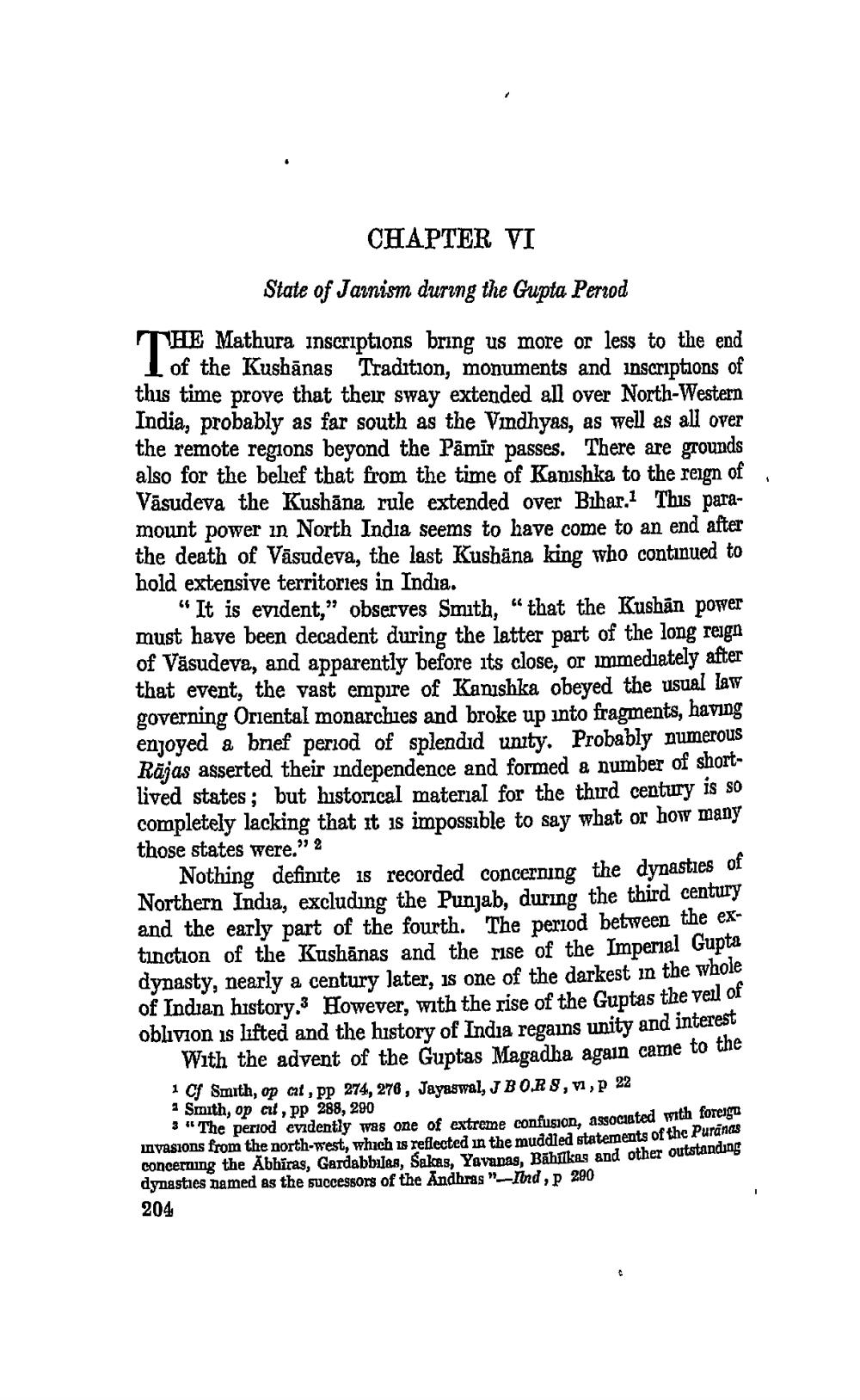________________ CHAPTER VI State of Jainism during the Gupta Period THE Mathura inscriptions bring us more or less to the end I of the Kushanas Tradition, monuments and inscriptions of this time prove that their sway extended all over North-Western India, probably as far south as the Vindhyas, as well as all over the remote regions beyond the Pamir passes. There are grounds also for the belief that from the time of Kanishka to the reign of Vasudeva the Kushana rule extended over Bihar.1 This paramount power in North India seems to have come to an end after the death of Vasudeva, the last Kushana king who continued to hold extensive territories in India. "It is evident," observes Smith, "that the Kushan power must have been decadent during the latter part of the long reign of Vasudeva, and apparently before its close, or immediately after that event, the vast empire of Kanishka obeyed the usual law governing Oriental monarchies and broke up into fragments, having enjoyed a brief period of splendid unity. Probably numerous Rajas asserted their independence and formed a number of shortlived states; but historical material for the third century is so completely lacking that it is impossible to say what or how many those states were." Nothing definite is recorded concerning the dynasties of Northern India, excluding the Punjab, during the third century and the early part of the fourth. The period between the extinction of the Kushanas and the rise of the Imperial Gupta dynasty, nearly a century later, is one of the darkest in the whole of Indian history. However, with the rise of the Guptas the verlor oblivion is lifted and the history of India regains unity and interest With the advent of the Guptas Magadha again came to the 1C Smith, op aat, pp 274, 276, Jayaswal, J BO.R 8, v1, p 22 Smith, op cit, pp 288, 290 "The period evidently was one of extreme confusion, associated with foreigo invasions from the north-west, which is reflected in the muddled statements of the rura concerning the Abhiras, Gardabbalas, Sakas. Yavanag, Bahrikas and other outstanding dynasties named as the successors of the Andhras - Ihd, p 200 204




